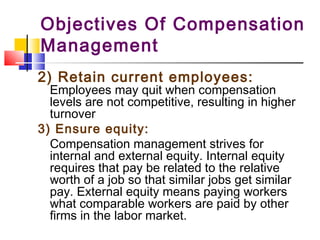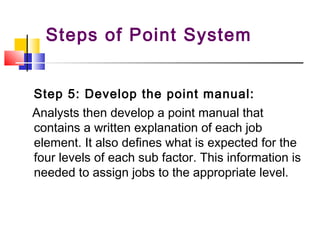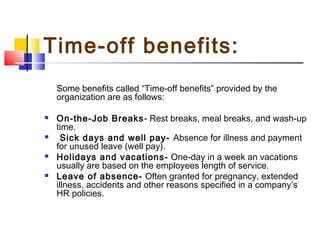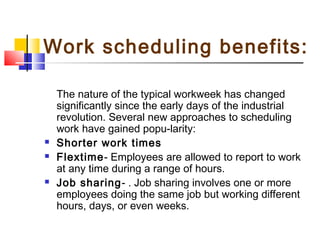The document discusses compensation practices in Bangladesh. It covers key topics like defining compensation, challenges that affect compensation, objectives of compensation management, components of compensation, and how to establish pay rates through conducting salary surveys, job evaluation, grouping jobs into pay grades, and setting wage curves. The presentation addresses current issues in compensation management and details the various contents of a compensation system, including wages/salaries, incentives, and benefits.










































































